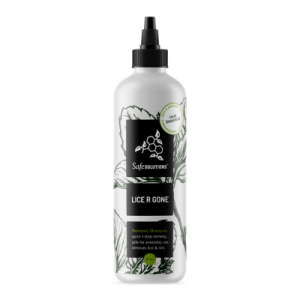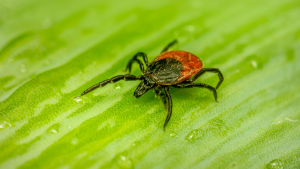The days are growing shorter, the air is getting cooler, and the leaves are starting to change their hue. Fall is upon us and that means school is back in session for many kids, and also that head lice may soon be on the rise once again.
Head lice can seem scary but it is important to not overreact out of fear of a potential head lice infestation, and rely on poisons or chemicals to control lice; as they are often much more dangerous than the actual lice.
In speaking with others or looking up head lice on the internet, you may find that there is so much conflicting information and it can be hard to separate fact from fiction.
This article will cover 10 common head lice myths & facts, and hopefully will clear up any concerns about dealing with head lice on your kids.
Table of Contents:
1. Head Lice Can Fly & Jump
2. Head Lice Are a Sign of a Dirty Head
3. You Can Contract Head Lice by Hugging or Taking Selfies
4. Head Lice Come in a Variety of Different Colors
5. You Need to Shave Your Head to Get Rid of Lice
6. You Can Get Lice From Pets and Animals
7. Head Lice Can Only Survive 48 Hours Without Food
8. It Is Important to Purchase Lice Prevention Products
9. Head Lice Are More Common in Lower-Income Areas
10. Nothing Can Get Rid of Super Lice
Final Thoughts
1. Head Lice Can Fly & Jump
Myth!
Head lice cannot fly – they have no wings. They also cannot jump, although some people report them doing so.
Take a look at the following magnified photo of a head louse to see its physical features up close.

Lice only have 6 legs and each leg is equipped with claws that are suitable for latching onto hair shafts, as they crawl around heads. Head lice have been known to crawl up arms, sometimes rather quickly, to escape shampoo treatments.
2. Head Lice Are a Sign of a Dirty Head
Myth!
Head lice are highly contagious and if someone comes into contact with an individual who has them, there is an incredibly high likelihood they will contract the lice – clean hair or dirty hair. Animals in general, including insects, actually do prefer to be clean and live in clean environments, and head lice do prefer to live on a clean head; however, as simple soap & water can eliminate them we tend to see those who do not shower as often having head lice.
That being said, those who shower daily can still contract lice and be unable to fully get rid of them for several months, as although soap can kill lice, it cannot kill their nits – which keeps the infestation going.
3. You Can Contract Head Lice by Hugging or Taking Selfies
Fact!
Head lice transmission can be very quick and all it takes is touching someone who has them to allow the lice to crawl onto a new host. Typically we see the amount of people contracting head lice spike during the holidays, where families travel far & wide to see one another. Other than being in close contact with someone who has lice, the only other way to contract lice is to share infested clothing or other materials.
4. Head Lice Come in a Variety of Different Colors
Fact!
Head lice come in a variety of different colors and they are able to change their colors. Typically adult lice vary from a dirty-white to reddish-brown to a grayish-black, and usually they are in similar color to their host’s hair.
During the nymph stage of the head lice life cycle is where lice develop which color they will have. If lice nymphs develop on a blonde or light colored head, they will usually be lighter in color as adults. If the nymphs develop on dark colored hair, the adults will usually darker and more pronounced in their color.
Head lice nymphs are almost translucent and once they feed the blood makes them as red as rubies. Adult head lice can be a little translucent as well (as pictured above) and just like their nymphs they can take on a more reddish hue after they feed.
Below is a comparison of lice combed from dark brown hair and lice combed from blonde hair to illustrate their variance in color.

5. You Need to Shave Your Head to Get Rid of Lice
Myth!
It is important to note that shaving your head does help in getting rid of head lice. Once shaved, it is easier to inspect and comb through (if you even have enough hair to do so) and you vastly decrease the surface area for head lice to live and hide in.
That being said, it is not necessary at all to shave your head to fully get rid of head lice. The best control for head lice, Lice R Gone shampoo, has helped thousands of people get rid of lice – often times in a single treatment – without any harsh chemicals or needing to shave one’s head. Creating a nice lather and massaging Lice R Gone into the hair will help remove the lice, no matter how long, how thick, or how curly your hair is. For more information on how to use Lice R Gone to get rid of lice without chemicals, click to read this article.
6. You Can Get Lice From Pets and Animals
Myth!

If you do contract lice, you can rest assured your furry friend did not pass them onto you, as head lice specifically need to feed on human blood and cannot survive on pets or any other type of animal.
There are around 5,000 different species of lice in the world with around 4,000 that are found on birds and the remainder found on mammals. Of that remainder, there are only 3 species of lice that are parasitic to humans: head lice, body lice, and crab lice.
7. Head Lice Can Only Survive 48 Hours Without Food
Fact!
Head lice do not survive very long when they are far from a host, and this is a big reason why they choose to make their home directly on human heads. This means that if you do contract lice, typically you do not need clean your entire home and wash/sterilize all your belongings. It is important to instead focus on treating the lice on the head and wash clothing that has been currently/recently used and typically the only place to focus on removing lice in the home would be pillows or bedding.
8. It Is Important to Purchase Lice Prevention Products
Myth!
Head lice, like many other insects, can be repelled using a variety of essential oils (peppermint oil being my personal favorite as an all-around repellent). I want to note that it is possible to repel lice, but often times a lice preventative spray product can cost the same amount as a treatment removal for the lice. Although these oils & products can aid in repelling lice, they are not foolproof and lice you can still contract lice – remember lice desperately need a human head to survive as they cannot survive long without food.
The absolute best prevention for head lice is to practice proper social distancing (hopefully that didn’t bring back too many flashbacks from the Pandemic). For those with longer hair, putting hair into a braid can also help to prevent them. Not sharing garments or clothing, typically those that are worn on or around the head is another good prevention method. All of these prevention methods do not cost you anything, and the only money you should ever spend on lice is a proper, quality, safe treatment to remove them. If you do not practice the proper social distancing, the repellent products will be of little use.
9. Head Lice Are More Common in Lower-Income Areas
Myth!
This myth is related to the second myth we covered in this article “Head Lice Are a Sign of a Dirty Head” (which was false). The fact is head lice transmission is about the same in both affluent and lower-income homes. Head lice do not care about socioeconomic status and lice transmission can be quite common in million-dollar homes, as they are a highly contagious pest.
It is important to not be ashamed or embarrassed if you contract lice. The fact of the matter is they are very easy to contract and are actually a very common pest to deal with, no matter the income level one resides in. Luckily, head lice can be easily & safely removed with the proper treatment, Lice R Gone being the best control, to get over this annoying condition as quickly as possible.
10. Nothing Can Get Rid of Super Lice
Myth!
The term “super lice” has been used to describe lice that are so resistant to chemical treatments, that no matter what is thrown at them, the infestation never goes away. It is true that no chemical treatment can get rid of super lice, as they carry special genes that allow them to be more resistant to chemical/poison treatments, however, Lice R Gone works on super lice when nothing else can.
The reason Lice R Gone works is that lice cannot develop a resistance to Lice R Gone shampoo, as it utilizes the very enzymes lice need to molt and survive against them. Lice R Gone is also able to use powerful enzymes to dissolve nit glue and help them to slide of the hair shafts.
Lice R Gone usually takes around 10-15 minutes to treat lice, however, with super lice it has to be left in for 30-40 minutes. This is because chemical treatments actually apply an armor-like coating to super lice and further cement the nit glue to be even harder. Lice R Gone then needs to work through the chemical layer before it can get to the lice & nits.
Final Thoughts
Hopefully this article has been helpful in dispelling myths about head lice!
If there is one main takeaway from this article it would be to not be scared if you or your child contracts lice. Chemical treatments are far more dangerous than the lice themselves and these toxic treatments do not even work. Instead, try using natural & safe alternatives to remove lice & their nits.
If you enjoyed this article you can check out more in the Blog and continue to come back for more as they are made available. You can also follow us on Facebook @safesolutionsinc or on Instagram @safesolutions we always make sure to post new articles that have been uploaded to the Blog, so you won’t miss the next one!
You can also get free access and view the full chapter on lice at www.thebestcontrol2.com
Have a wonderful Fall season and best of luck as your kiddos head back to school!
Thanks for reading!
-Gage





